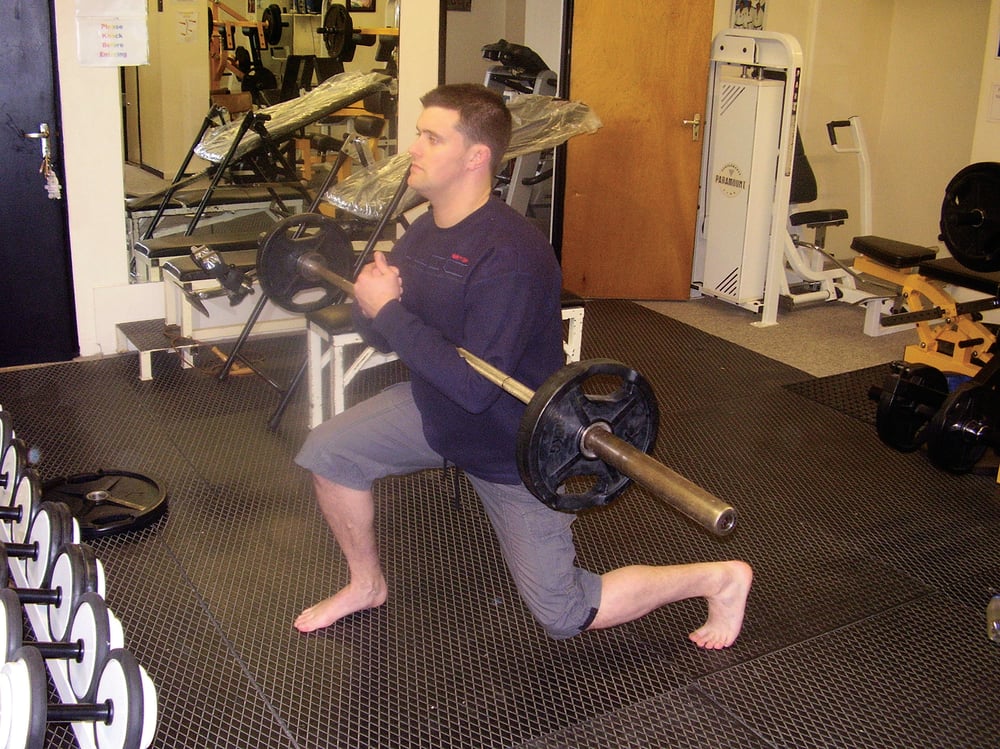
Issue 025
May 2007
Part 1: The Zercher Lunge.
By Barry Gibson
This new series of articles has been inspired by Richard Schmidt’s theory of human movement, and over the next few issues (six to be precise) we’ll be covering these with regards to MMA. The six movements (you’ll ever need) are; squat, deadlift, lunge, push, pull and twist. These movements are integral to how we as humans move and we perform these every day in one way or another. For example, we lunge when taking stairs two at a time.
For the MMA athlete lunges are even more commonplace. Most fighters perform the above lifts but tend to leave the lunge alone. Working the legs unilaterally will afford great benefits to the trainee. MMA requires a good degree of leg strength, with kicking, clinching, and shooting all part and parcel of combat. All of these demand a lunging-type movement.
So which muscles are targeted? Obviously the quads are hit fairly hard as they straighten your leg when flexed at the knee, and your hamstrings and gluteal muscles are involved in extending your hip on the return to the standing position. One extra benefit of the lunge is that the adductor and abductor muscles also receive some punishment, which provides much needed stability for the hips, vital for preventing takedowns and dominating the clinch.
Lunges can be performed in any direction; forward, backwards and laterally. An MMA fighter needs to incorporate all the variations and effectively work the angles.
Let’s look at exactly what the Zercher lunge is. The Zercher technique is a method that involves holding the weight across the front of your body. Apparently developed by Ed Zercher in the 1930s, poor Ed didn’t have a squat rack, so he needed a method of holding a bar safely to perform his squat routine.
How?
With this exercise, it is necessary to start off lighter than normal to familiarise yourself with the movement. Begin by picking up the chosen resistance tool (barbell, sandbag etc, see the attached pictures for examples). Cradle the weight in front of your chest, holding it in the crook of your elbows. Your arms are bent at 90 degrees and your hands can be open or clasped together. Now you’re ready to start the lunge. Take a big step forward (or backwards or to the side, depending on which lunge you are performing), plant your foot and lower your body so the front knee is bent at approximately 90 degrees and your rear knee almost touches the floor. Power back to the start position by pushing through the heel of the front foot. Alternate legs with each rep.
Why?
The unique nature of the Zercher hold means that a very effective lower body exercise is transformed into a gruelling full body movement. In case you missed the point, it is important to train movements rather than muscles! The upper body is taxed to the extreme by being forced to isometrically hold the weight in a strong position – specifically your arms and upper back will be fried with this movement.
The relevance to MMA should be obvious here – does holding an opponent in the clinch while throwing knees or trying to trip and takedown your opponent sound familiar? The Zercher lunge will develop the characteristics essential for these skills while building strong legs, hips, core and back. Implement this movement into your routine and I guarantee you’ll be convinced of its efficiency.
Next month: The squat.
Barry can be contacted with any queries at [email protected]. His DVD ‘Train Hard, Fight Easy’ is available at an introductory price of £14.99 for a limited time only. Check out www.grapplefit.com for more details.
...













